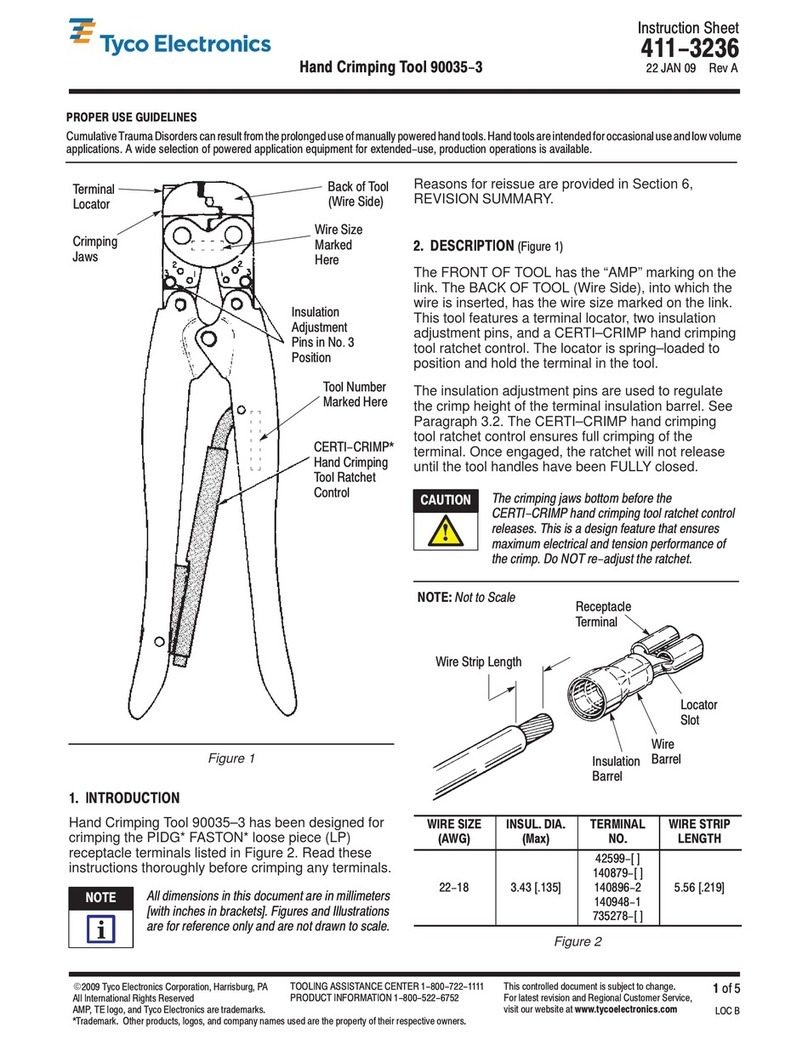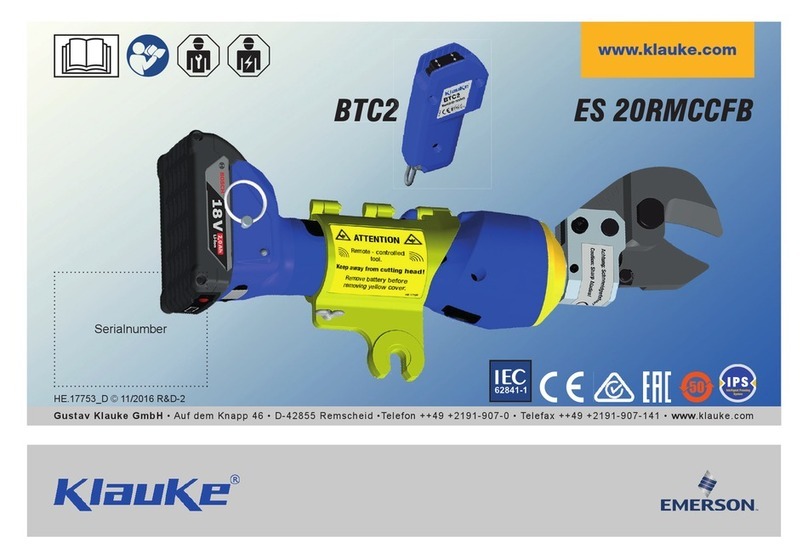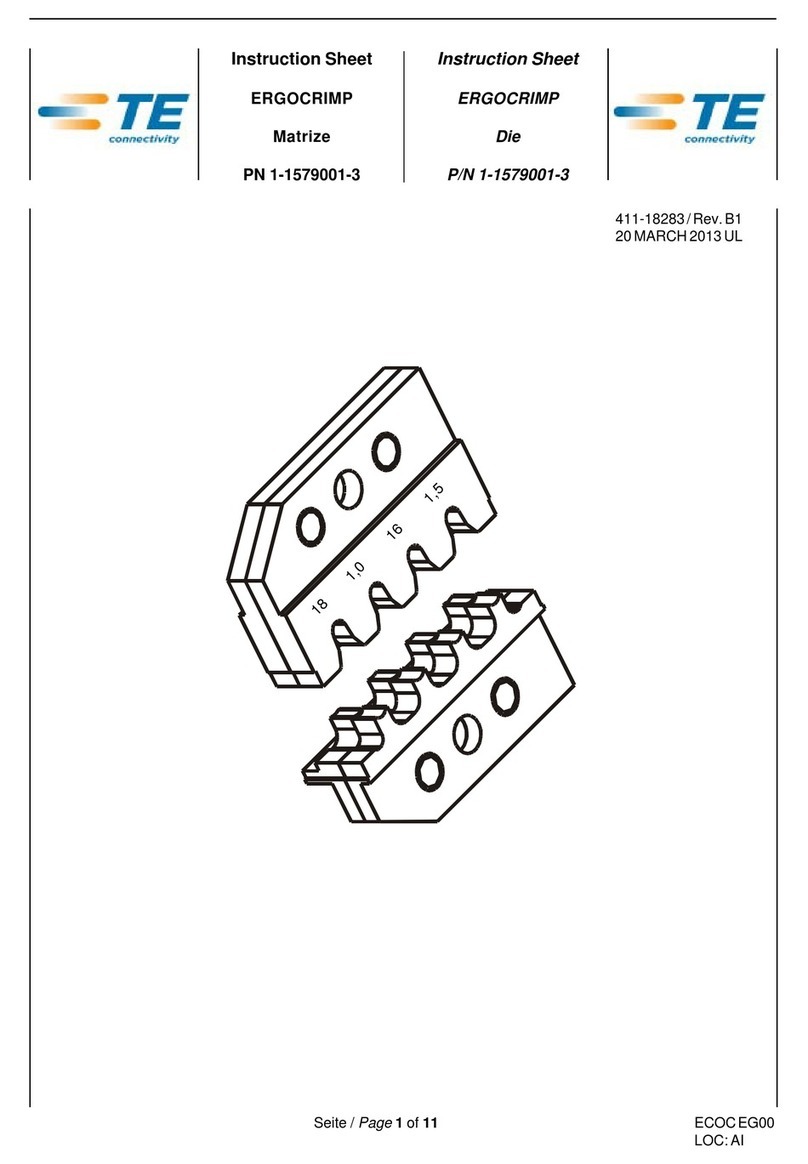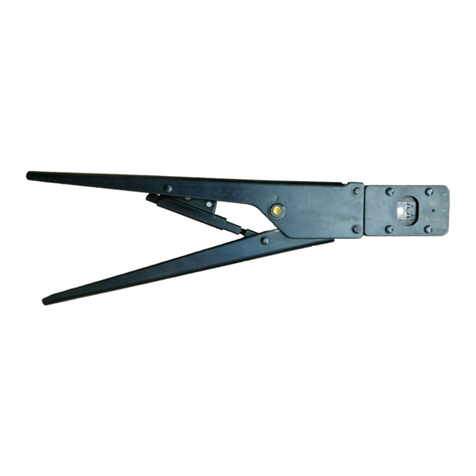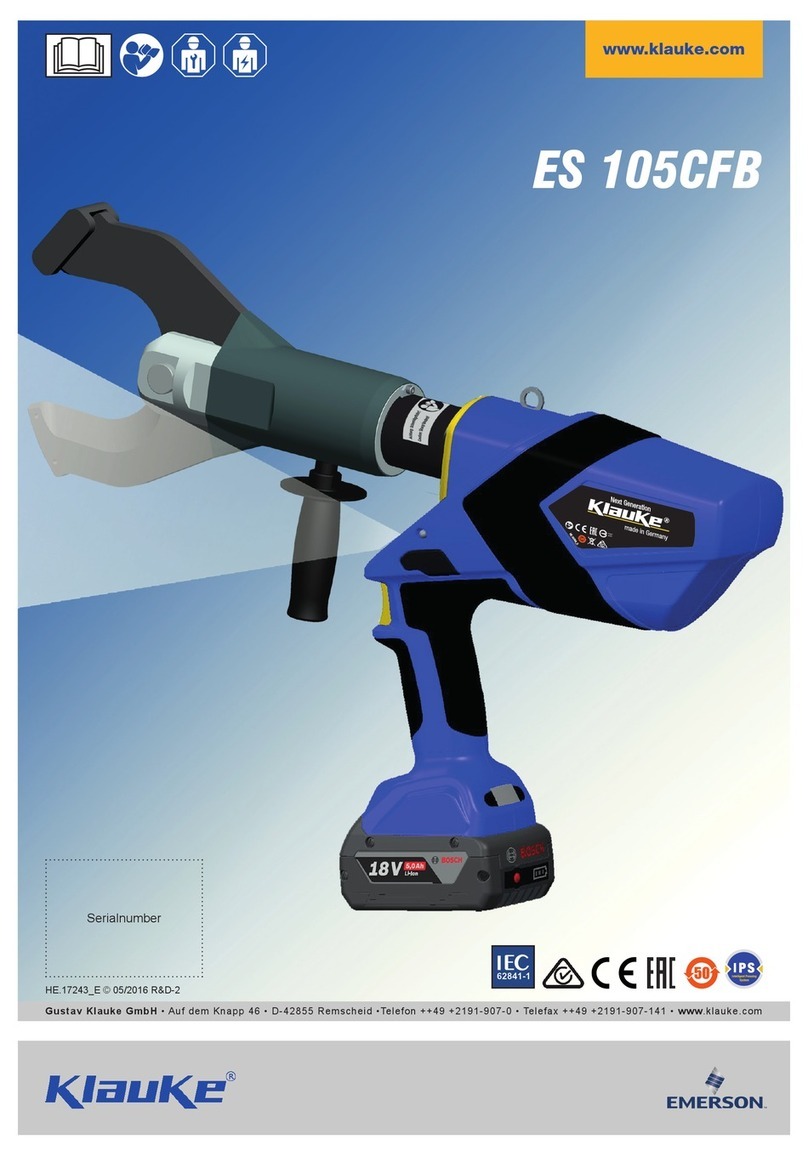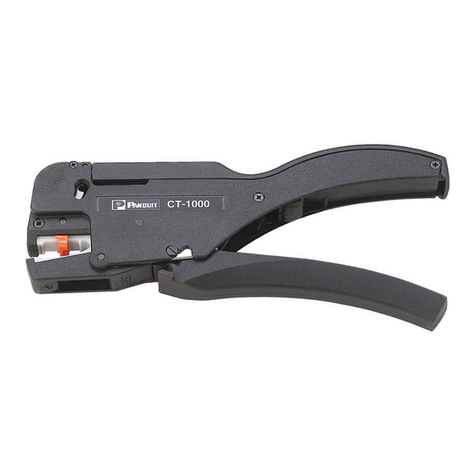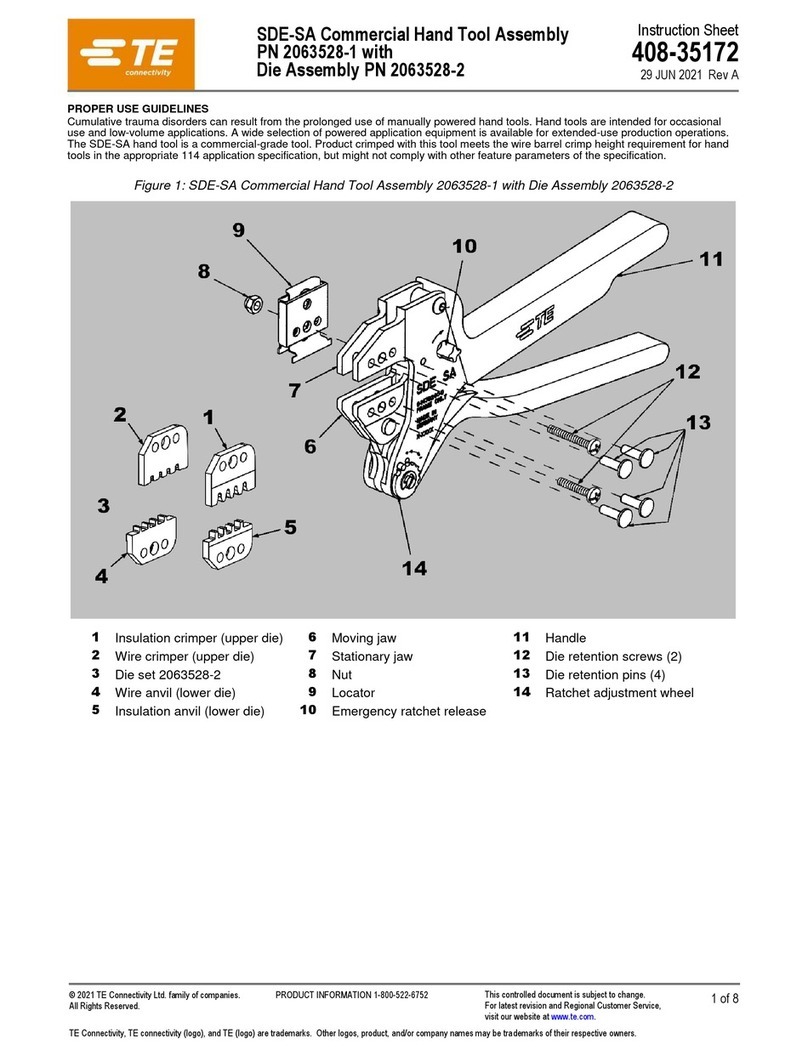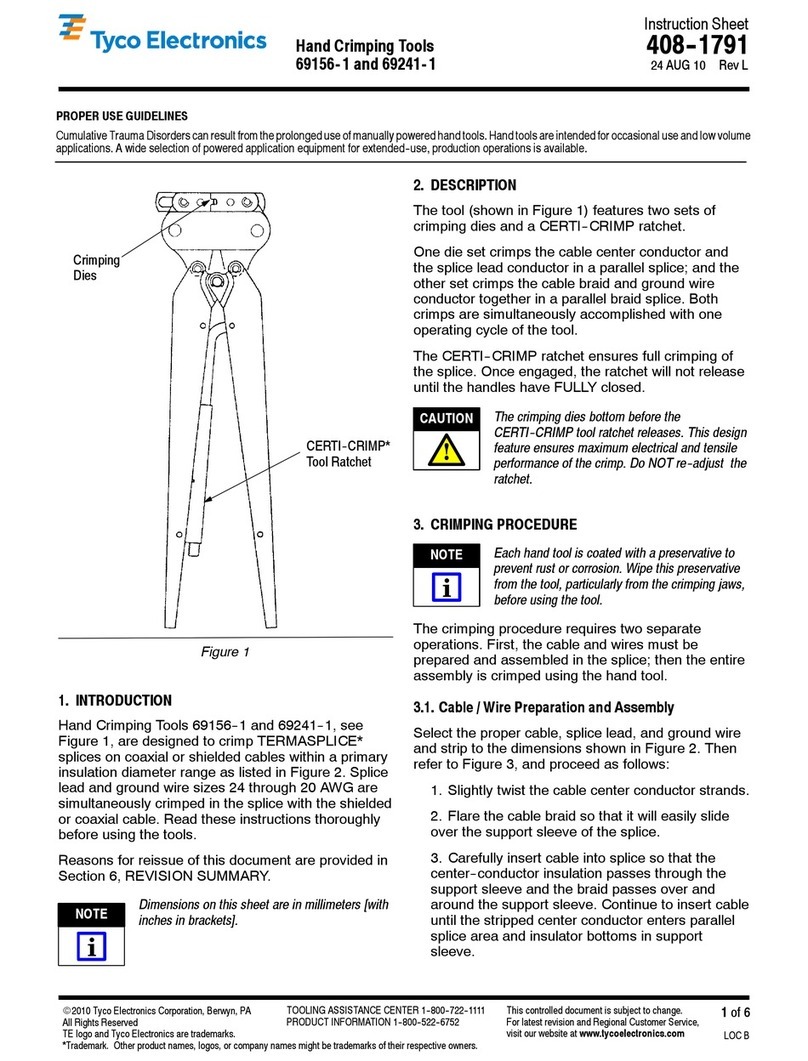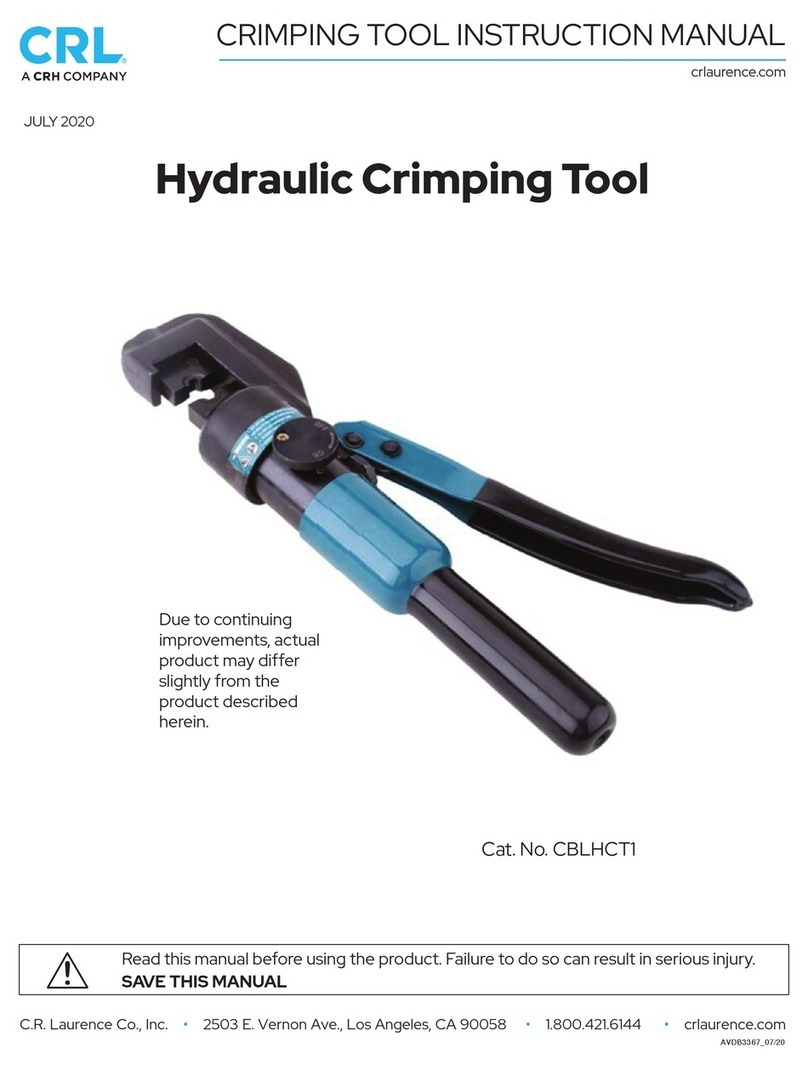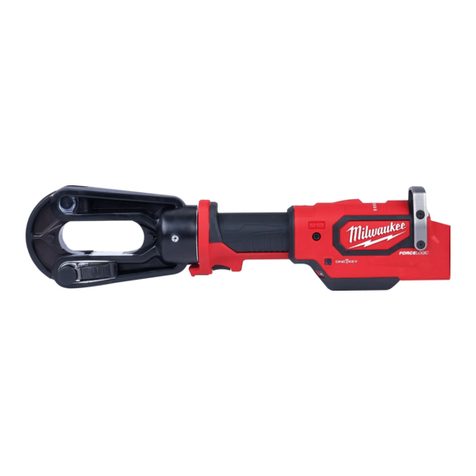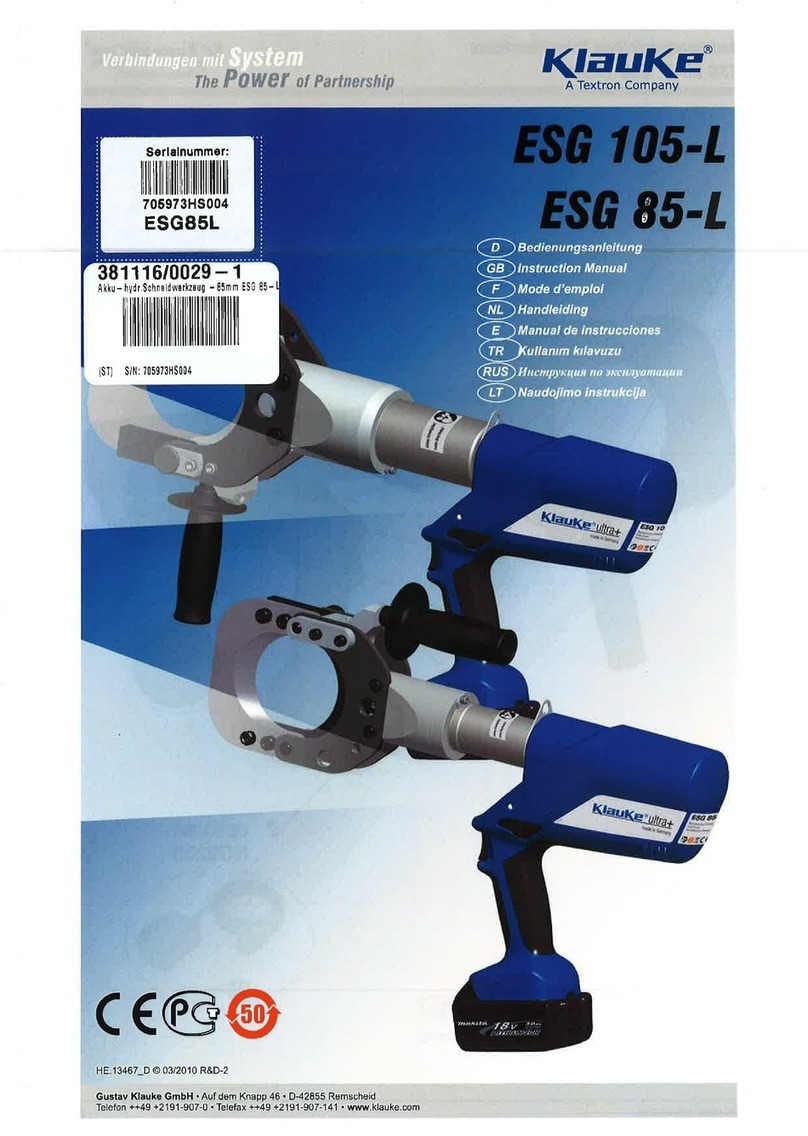
English
7
when moving from one operation position to another.
• Respect the tool as a working implement.
• Do not engage in horseplay.
• Remove any tools used for maintenance or repair
before using the tool. Tools left attached to a moving
part of the tool may result in personal injury.
• Handlethetoolwithcare,asitcangetcold,aecting
grip and control.
• Neverusethetoolinthepresenceofammabledust,
gases or fumes. The tool may produce a spark that
couldignitegasescausingareorexplotion.
• Keep work area clean and well lit. Cluttered or dark
areas invite to accidents.
• Do not use the tool if it is not in proper working
condition.
• Inspect the tool before operating to determine that it
is in proper working order. Check for misalignment,
binding of moving parts and any other condition that
mayaecttheoperation.Donotoperateifanyofthe
above-mentioned conditions occur as it can cause
malfunction.
• Leave the tool in resting position lying on the side.
• Only technically skilled persons, who have read and
understoodtheoperating/safetyinstructionsshould
operate the tool.
• Keep children and bystanders away while operating
the tool. Distractions can cause you to lose control.
• Always assume that the tool is pressurised. Careless
handlingofthetoolcanresultinunexpectedactiva-
tion and personal injury.
• Do not point the tool towards yourself or anyone
nearby.
• Do not force the tool. Use the correct tool for your
application as it will do the job better and safer at the
rate for which it was designed.
• Donotactuatethetoolunlessitisplacedrmlyagainst
the work piece.
• Do not use the tool in material that is too hard or too
thick. Too hard or too thick material can ricochet the
plunger and hurt people.
• Useextracautionwhenusingthetoolinexisting
walls or other blind areas to prevent contact with
hidden objects (e.g., wires, pipes, electrical cables.)
• When activating the tool it may spring back (“recoil”)
causing it to move away from the work surface. To
reduce risk of injury always manage recoil by:
∙always maintaining control of the tool and be
ready to counteract normal or sudden movements
such as recoil.
∙not resisting recoil so that the tool will be forced
back into the work surface.
∙keeping face and body parts away from the tool.
• Do not use the tool to perform other jobs than the
designated function. Especially do not use it as a
hammer. Impact on the tool will increase the risk of
damaged tool.
• Do not use the tool if safety warning label(s) are
missing or damaged.
• Do not remove, tamper with, or otherwise cause tool
operating controls to become inoperable. Do not
operate the tool if any portion of the tool operating
controls is inoperable, disconnected, altered, or not
working properly.
• Thetoolshouldnotbemodiedunlessauthorized
in the manual or approved in writing by Kyocera
Unimerco Fastening. Fail to comply can lead to
dangerous situations or injury’s.
• Alwayskeephands,ngersandotherbody
parts away from the tool mouth opening (B). Unin-
tentional activation may lead to serious injury.
• Use caution while removing a stuck plunger. The
mechanism may be under compression.
• Remove the compressed air when
∙Not in use;
∙Performing any maintenance or repairs;
∙Clearing a stuck plunger;
∙Elevating, lowering or otherwise moving the tool to
a new location;
∙The tool is outside of the operator’s supervision
or control
• Compressed air can cause severe injury.
• Alwaysshutoairsupply,anddisconnectthetool
from air supply when not in use.
• Never direct compressed air at yourself or anyone
else.
• Always use the correct tool air plug (E) for the hose
coupling. The pressure must be removed from the
tool when the coupling joint is disconnected.
∙ Whenusingthetooldonotexceedthemaximum
operating pressure Pmaxof 8,3 bar.
• The tool must not be connected to a compressor
whichpotentiallyexceeds175psior12bar.
• Children shall not play with the tool. Cleaning and
user maintenance shall not be made by children.
• Whipping hoses can cause severe injury. Always
checkfordamagedorloosehosesorttings.
• Optimum air supply is achieved using an air hose
withadiameterof3/8”or10mm.Iftheairhoseistoo
long, this may cause lack of pressure and air supply.
• Never carry or drag the tool by its hose.
• Maintain the tool with care. If damaged, have it
repaired before use. Please refer to the maintenance
instructions for detailed information on the proper
maintenance of the tool.
• Pleasekeepthetoolincleancondition,wipeo
greaseand/oroilafterwork.Donotuseanysolvent
based cleaner to clean the tool. It is possible that
thesolventwilldeterioratetherubberand/orplastic
components on the tool. Greasy handle and tool
body can cause accidental drop of the tool and injury
to nearby person.
• Haveyourtoolservicedbyaqualiedrepairperson
using only parts that are supplied or recommended
by Kyocera Unimerco Fastening. This will ensure that
the safety of the tool is maintained.
• The tool should only be powered by compressed air
at the lowest pressure required for the work progress
to reduce noise and vibration, and minimize wear.
• Use only lubricants recommended by Kyocera Uni-
